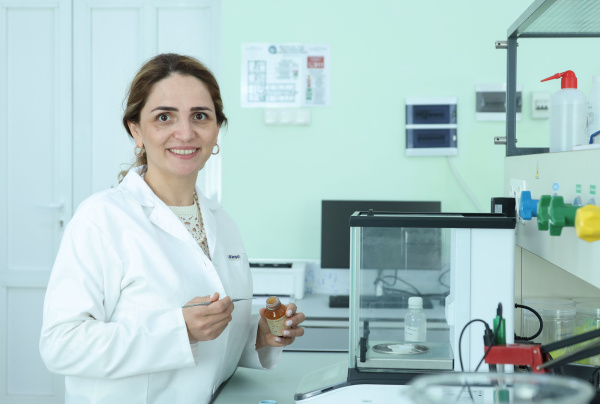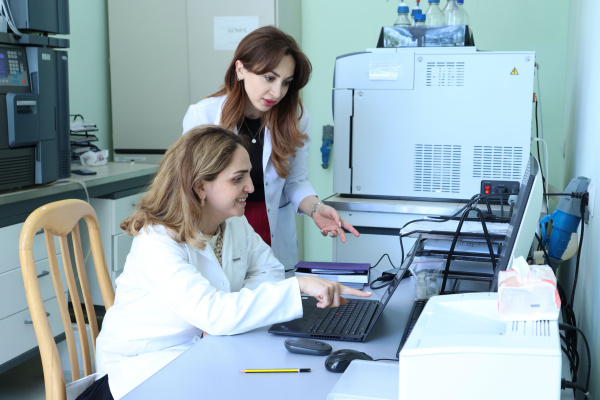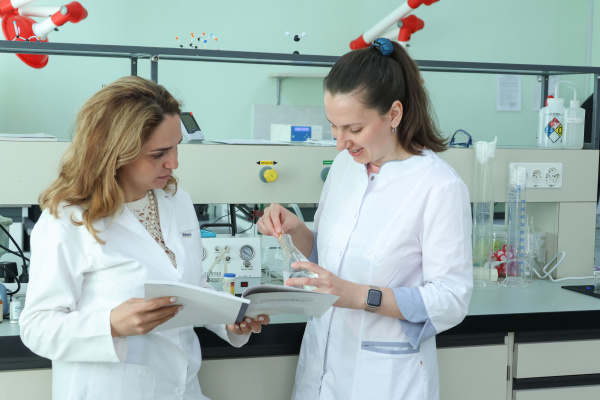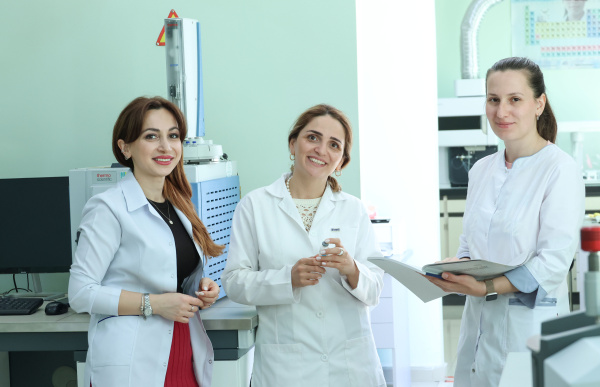May 07, 2025 | 13:35
Research
International cooperation
Competitions
Development of new materials for chiral separation and purification processes
Lusine Hayrapetyan, a young researcher at Yerevan State University, along with her research team, is working on the development of new materials that can be effectively applied in chiral separation and purification processes. She emphasizes that in certain medications, one of the chiral forms may treat the disease, while the other may be ineffective or even harmful. Currently, the scientific team is focused on developing a silica gel-based sorbent with the aim of ensuring efficient chiral separation.

Lusine Hayrapetyan, a junior researcher at the Scientific and Educational Center for Control and Monitoring of the Quality of Medicines at YSU Institute of Pharmacy, has received funding for her scientific project titled "Chiral Composite Sorbents Based on Aminopolysaccharides (Chitosan)". The project was selected under the "Support Program for Young Researchers – 2025" competition announced by the Higher Education and Science Committee of the Ministry of Education, Science, Culture and Sports of the Republic of Armenia.

- Lusine, could you explain what chiral substances are and their significance?
- Chiral compounds are characterized by a specific structural property where their mirror images are non-superimposable—much like human hands. This stereochemical feature is of critical importance in biochemistry and pharmaceutical sciences because different enantiomers of the same compound can exhibit vastly different biological activities. For instance, one enantiomer of a drug may exert therapeutic effects, while the other may be inactive or even harmful.
– What are chromatographic columns with specialized sorbents?
One of the key challenges in modern chromatography is the separation of chiral compounds, which demands high selectivity and efficient separation mechanisms. Specialized chromatographic columns filled with chiral sorbents are used to achieve this goal. These columns offer high sensitivity and precision, enabling the effective resolution of enantiomers. Such columns are vital in high-performance liquid chromatography (HPLC), where the accurate separation of chiral compounds is essential to ensure analytical quality and reliability.

- What is the importance of developing new types of chiral sorbents, and in which fields are they applied?
- Chiral sorbents are materials designed to selectively adsorb and separate enantiomers of chiral compounds, offering high accuracy and efficiency. The development of novel sorbent types is crucial due to the increasing prevalence of optically active substances in pharmaceuticals and agrochemicals, which necessitates rigorous control over their optical purity. Chiral stationary phases may employ a variety of selectors—ranging from low- to high-molecular-weight polymeric materials—derived from natural chiral compounds or synthesized artificially. However, there is currently no stationary phase that simultaneously provides high enantioselectivity, chromatographic efficiency, and broad applicability.
- What specific problem does your project aim to address?
- This project aims to synthesize composite polymeric sorbents based on aminopolysaccharides, multi-nuclear antibiotics, silica gels, and porous resins. The objective is to develop novel materials that can be efficiently employed in the processes of chiral separation and purification. Multi-nuclear antibiotics will be used as chiral selectors, while the cross-linking ability of chitosan will allow its stable immobilization on porous supports, forming insoluble chitosan-based structures capable of retaining antibiotic molecules. The project also plans to develop HPLC chiral columns based on inorganic porous materials, thereby enhancing their selectivity and practical applicability.

- At what stage is the research currently, and what conclusions have you reached?
- At present, the research is in the development phase of synthesizing a silica-gel-based sorbent aimed at facilitating efficient chiral separation. The antibiotic to be used as a chiral selector has already been identified, which will improve selectivity and enhance the precision of optical purity control.
- Which international research centers will you be collaborating with, and what specific studies will be conducted?
- In June, Professor Marino Lavorgna from the Institute of Polymers, Composites, and Biomaterials at the National Research Council of Italy is expected to visit our laboratory. During this collaboration, we will focus on the synthesis and characterization of microspherical composite sorbents composed of synthetic resins, chitosan, and antibiotics. This joint research aims to improve the properties of the sorbents, thereby increasing their efficiency across various applications.

- Who else is involved in your research team?
- The research team includes experts from YSU Scientific and Educational Center for Control and Monitoring of the Quality of Medicines Ani Chakhoyan and Ela Minasyan, who contribute to the optimization of research processes. Additionally, international partner Professor Marino Lavorgna supports the development of advanced scientific methodologies within the framework of this collaborative research effort.

